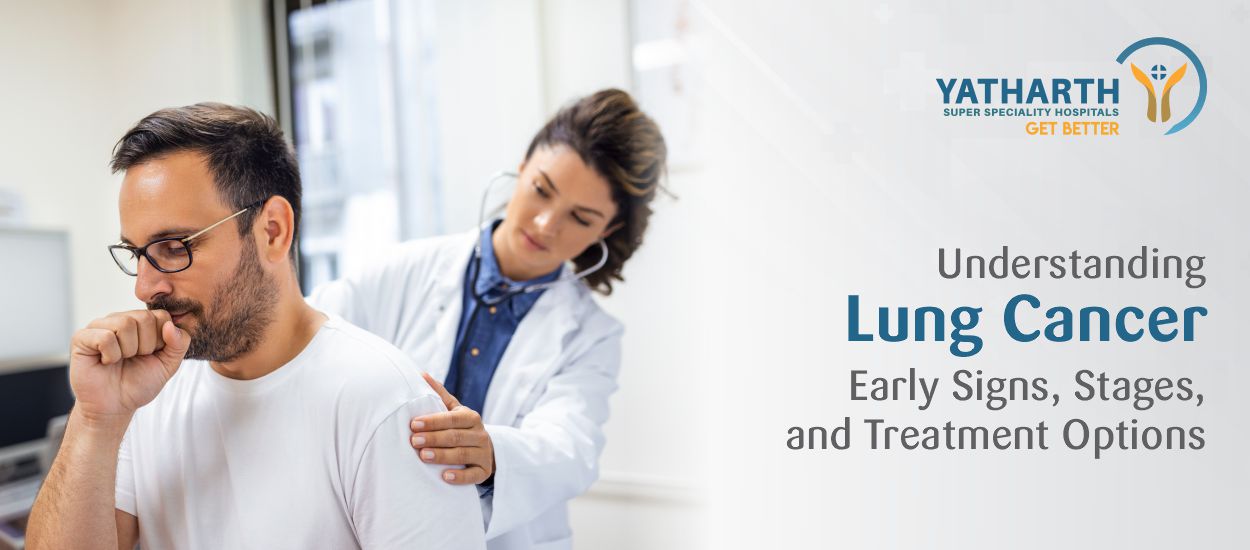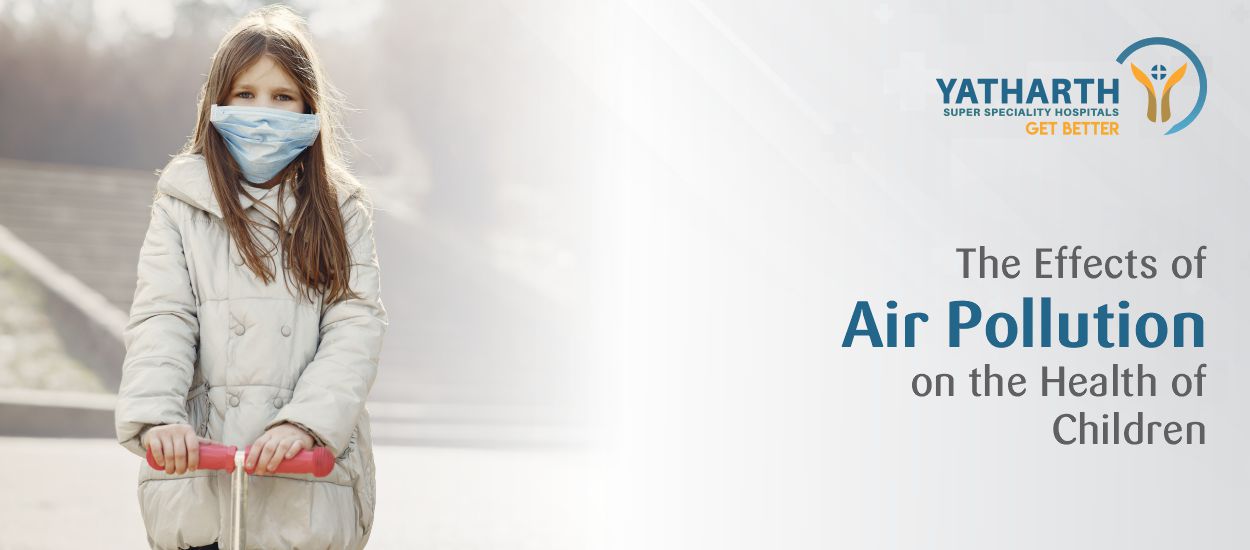Lung cancer is one of the leading causes of cancer-related deaths worldwide, which is quite unfortunate, as it is among the most manageable forms of cancer - if detected at an early stage. Lung cancer develops when abnormal cells in the lungs multiple uncontrollably, forming tumours that can affect breathing and spread to other parts of the body. While smoking remains the leading cause of lung cancer, other factors such as air pollution, inherited genetic mutations, and prolonged exposure to toxins can also heighten the risk. More on the subject, in this article, we will discuss the early signs, stages, causes, and treatment options for lung cancer, helping readers understand how early detection and intervention can make a life-saving difference. Let’s start by understanding the basics.
What is Lung Cancer?
Lung cancer occurs when the cells in the lungs begin to multiple uncontrollably, forming a mass or tumour that disrupts normal lung function. These abnormal cells can invade nearby tissues or spread (metastasise) to other organs such as the brain, bones, or liver if not treated in time.
The lungs play a vital role in supplying oxygen to the body and removing carbon dioxide. When cancer develops, it affects this process, leading to breathing difficulties and other health complications.
There are two main types of lung cancer, categorised based on how the cells appear under a microscope: non-small cell lung cancer (NSCLC), which is more common, and small cell lung cancer (SCLC), which tends to grow and spread faster. Identifying the type and stage of lung cancer helps doctors determine the most effective treatment approach.
Types of Lung Cancer
Lung cancer is broadly classified into two main types, each with distinct characteristics, growth patterns, and treatment approaches. Understanding these types helps determine the most effective course of therapy and expected outcomes. Common types include:
1. Non-Small Cell Lung Cancer (NSCLC)
This is the most common form of lung cancer, accounting for nearly 85% of all cases. It generally grows and spreads more slowly than small cell lung cancer. The main subtypes include:
-
Adenocarcinoma: The most common subtype, often seen in non-smokers and women. It begins in the cells that produce mucus and usually develops in the outer areas of the lungs.
-
Squamous Cell Carcinoma: Commonly associated with smoking, this type originates in the cells lining the airways.
-
Large Cell Carcinoma: A less common but fast-growing type that can appear in any part of the lung.
2. Small Cell Lung Cancer (SCLC)
Accounting for about 15% of lung cancer cases, this type is strongly linked to heavy smoking. It tends to grow rapidly and spread early to other parts of the body, often requiring a combination of chemotherapy and radiation therapy for management.
Stages of Lung Cancer
Lung cancer staging helps determine how far the disease has progressed and guides doctors in selecting the most appropriate treatment. Staging is based on tumour size, lymph node involvement, and whether the cancer has spread to other parts of the body. Stages in which lung cancer progress include:
Stage 1
Cancer is confined to the lungs and has not spread to nearby lymph nodes. At this stage, surgery may offer a potential cure, and the outlook is generally positive with timely treatment.
Stage 2
The tumour may have grown larger or spread to nearby lymph nodes. Treatment often involves a combination of surgery, chemotherapy, or radiation therapy.
Stage 3
Cancer has spread to lymph nodes or nearby structures within the chest. Management typically includes chemotherapy, radiation therapy, targeted therapy, or a combination of these treatments.
Stage 4 (Metastatic Lung Cancer)
Cancer has spread beyond the chest to distant organs such as the brain, liver, bones, or adrenal glands. Although it is the most advanced stage, modern therapies can help manage symptoms, slow disease progression, and improve quality of life.
Early detection is key, as lung cancer identified in its initial stages is far more treatable and has better long-term outcomes.
Early Signs and Symptoms of Lung Cancer
Lung cancer often develops quietly, with few noticeable symptoms in its early stages. By the time signs appear, the disease may have already advanced, making early recognition vital for successful treatment. While symptoms can vary depending on the type and stage of cancer, there are several warning signs that should not be ignored. Common symptoms of lung cancer include:
-
Persistent cough that worsens over time or doesn’t go away.
-
Chest pain or discomfort, especially during deep breathing, coughing, or laughing.
-
Shortness of breath or wheezing.
-
Coughing up blood or rust-coloured mucus.
-
Persistent fatigue or weakness.
-
Unexplained weight loss or loss of appetite.
-
Hoarseness or changes in the voice.
-
Frequent lung infections such as pneumonia or bronchitis.
Less common symptoms may include:
-
Swelling of the face or neck.
-
Pain in the shoulder, back, or chest.
-
Skin-related symptoms such as itching, rash, or small lumps when cancer spreads to the skin.
In women, early symptoms may be subtler, including persistent tiredness, mild back pain, or shortness of breath without coughing. Any unusual or lasting symptom should prompt a medical evaluation to rule out serious causes.
Diagnosis and Screening for Lung Cancer
Early and accurate diagnosis plays a vital role in improving treatment outcomes for lung cancer. Because early-stage lung cancer often causes few or no symptoms, screening and advanced diagnostic tests are essential for detecting the disease before it spreads.
Common Diagnostic Methods Used
-
Chest X-Ray and CT Scan: Imaging tests that help identify abnormal growths, nodules, or shadows in the lungs. Low-dose CT (LDCT) scans are often used for screening individuals at high risk, such as long-term smokers.
-
Sputum Cytology: Laboratory analysis of mucus (sputum) to check for the presence of cancerous cells.
-
Bronchoscopy: A thin, flexible tube with a camera is inserted through the nose or mouth to examine the airways and collect tissue samples.
-
Biopsy: A small tissue sample is removed from the lung or lymph node and examined under a microscope to confirm cancer type and stage.
-
PET-CT and MRI Scans: These imaging techniques provide detailed information about the size of the tumour and whether it has spread to other organs.
-
Molecular and Genetic Testing: Determines specific gene mutations to help identify targeted therapy options.
Screening for High-Risk Individuals
People aged 50 and above with a history of heavy smoking or long-term exposure to pollutants should consider regular lung cancer screening. Early detection through screening can significantly improve the chances of successful treatment.
Treatment Options for Lung Cancer
Treatment for lung cancer depends on the type, stage, and overall health of the patient. Advances in medical technology and precision medicine have made it possible to tailor therapies that target specific cancer characteristics, improving both survival and quality of life.
Common treatment approaches include:
-
Surgery: In early stages (Stage 1 or 2), surgical removal of the tumour may offer a potential cure. Types of surgery include lobectomy (removal of a lung lobe), pneumonectomy (removal of one lung), or wedge resection (removal of a small section).
-
Radiation Therapy: High-energy X-rays or proton beams are used to destroy cancer cells, often combined with chemotherapy or used after surgery to eliminate remaining cells.
-
Chemotherapy: Involves powerful drugs that target and kill rapidly dividing cancer cells. It may be used before surgery to shrink tumours or after surgery to prevent recurrence.
-
Targeted Therapy: Designed to attack specific genetic mutations in cancer cells, such as EGFR or ALK. This approach causes less harm to normal tissues compared to standard chemotherapy.
-
Immunotherapy: Boosts the body’s immune system to recognise and fight cancer cells. It is often used in advanced or metastatic lung cancer to extend survival and improve quality of life.
-
Palliative Care: For advanced stages, palliative treatment focuses on symptom management, pain control, and emotional support to enhance comfort and dignity.
Early-stage lung cancer can often be treated successfully with surgery, while later stages may require a combination of therapies. Ongoing follow-up and monitoring are crucial for ensuring the best possible outcomes.
Ways to Reduce the Risk of Lung Cancer
Although not all cases of lung cancer can be prevented, certain lifestyle changes and proactive health measures can significantly reduce the risk. Prevention focuses on limiting exposure to harmful substances and maintaining healthy lungs through regular care and screening.
Effective ways to prevent lung cancer include:
-
Avoid Smoking: The most effective preventive step. Quitting smoking at any age lowers the risk of developing lung cancer and improves overall lung health.
-
Avoid Second-Hand Smoke: Stay away from environments where others are smoking to reduce indirect exposure to harmful toxins.
-
Limit Exposure to Pollutants: Reduce time spent in polluted areas, wear masks when necessary, and ensure adequate ventilation indoors.
-
Test for Radon Levels: Check homes and workplaces for radon gas, particularly in areas known for higher environmental exposure.
-
Occupational Safety: Use protective equipment when handling industrial materials, dust, or asbestos.
-
Healthy Diet: Eat a balanced diet rich in fruits, vegetables, and antioxidants that support immune and respiratory health.
-
Regular Health Check-ups: Periodic lung screenings, especially for smokers or individuals at high risk, help detect early changes before symptoms appear.
While prevention cannot eliminate the risk entirely, adopting these habits can significantly lower the likelihood of developing lung cancer and promote better respiratory health.
Why Choose Yatharth Hospital for Lung Cancer Treatment?
At Yatharth Hospital, we understand that a lung cancer diagnosis can be overwhelming, both physically and emotionally. Our goal is to provide compassionate, comprehensive care supported by advanced medical expertise and cutting-edge technology to ensure the best possible outcomes for every patient. We offer:
Expert Pulmonologists and Oncologists
Our multidisciplinary team includes highly experienced pulmonologists, oncologists, thoracic surgeons, and radiologists who specialise in diagnosing and treating all types and stages of lung cancer. Each patient receives an individualised treatment plan tailored to their specific condition and overall health.
Advanced Diagnostic and Imaging Facilities
We use state-of-the-art imaging systems such as PET-CT, MRI, bronchoscopy, and endobronchial ultrasound for precise diagnosis and staging. These technologies help our specialists detect lung cancer at early stages and plan treatments with greater accuracy.
Comprehensive and Personalised Care
From initial screening and diagnosis to post-treatment rehabilitation, our team ensures continuous care throughout the journey. We focus on managing symptoms, supporting recovery, and improving quality of life through personalised follow-ups and counselling.
At Yatharth Hospital, our commitment goes beyond treatment - we aim to provide hope, guidance, and holistic support to every patient and family affected by lung cancer.
Comprehensive Cancer Care You Can Trust
A lung cancer diagnosis may feel overwhelming, but with timely detection, expert care, and the right treatment plan, it is possible to manage the disease effectively and maintain a good quality of life. Modern therapies have made great strides in improving survival and helping patients recover both physically and emotionally.
At Yatharth Hospital, we are dedicated to delivering advanced, compassionate care for patients with lung cancer. Our team of specialists works together to ensure every patient receives precise diagnosis, individualised treatment, and continuous support throughout their recovery journey.
To consult a lung specialist or oncologist at Yatharth Hospital, book an appointment online and our team will guide you through the next steps with complete care and support.
















